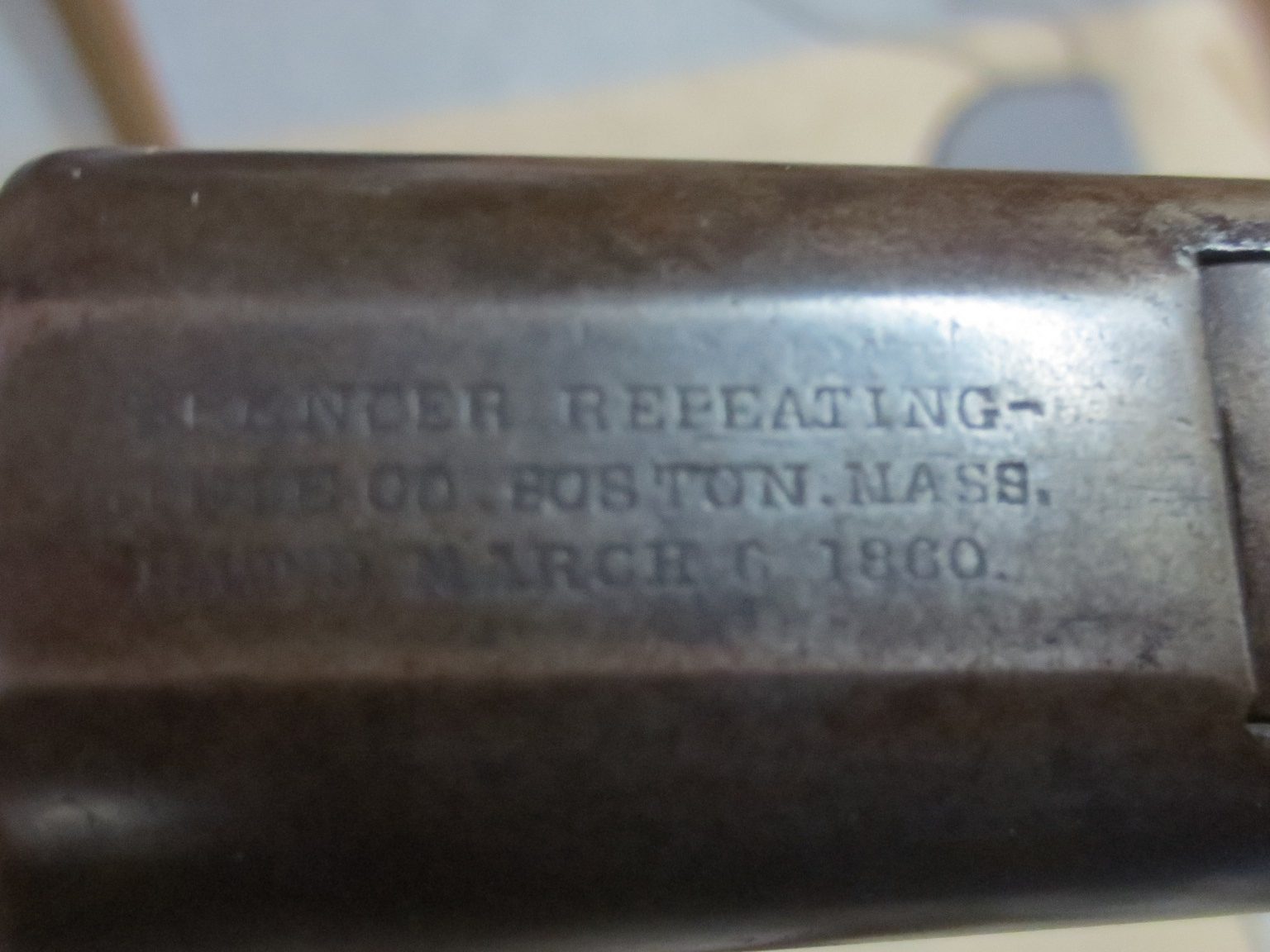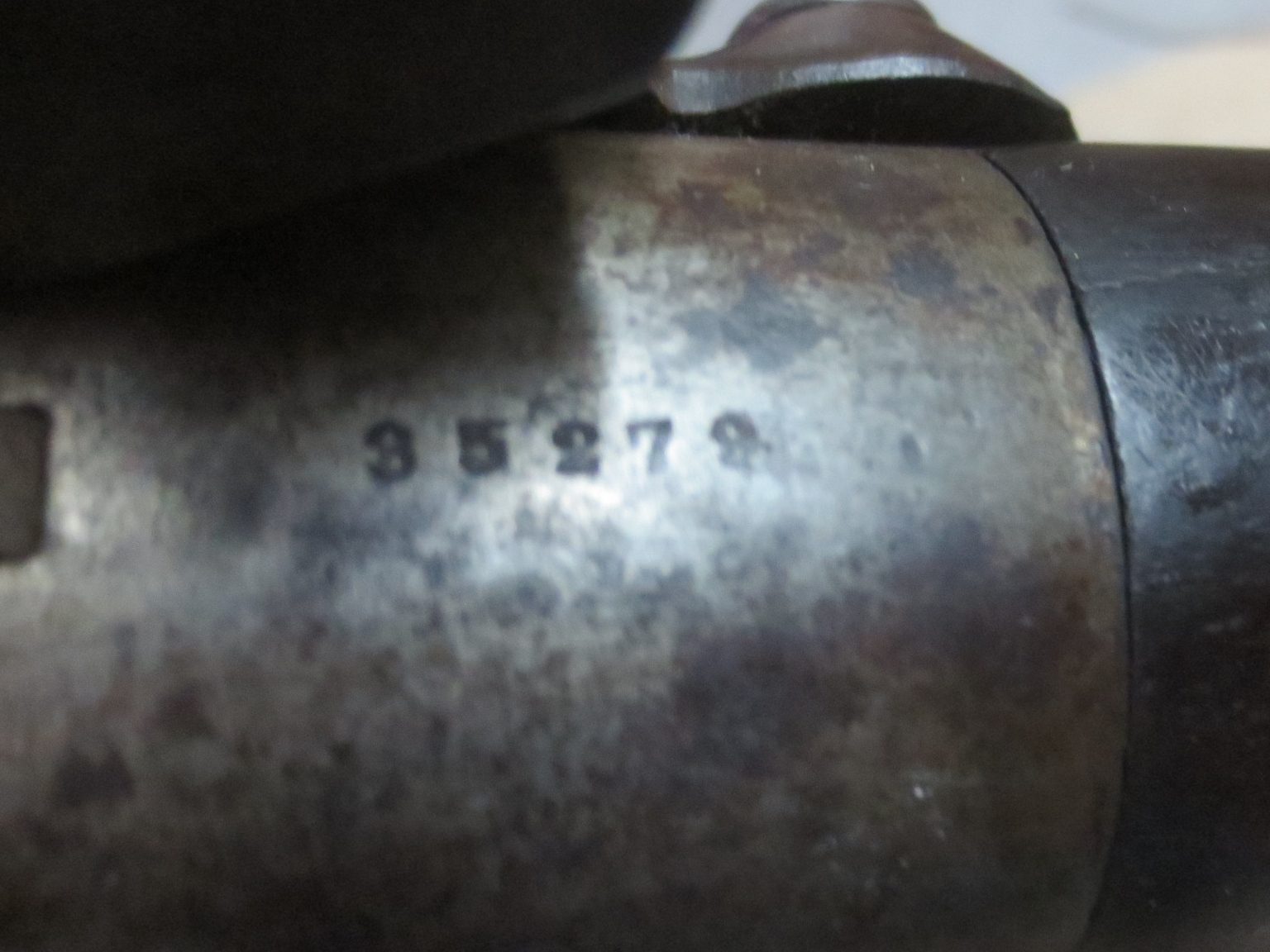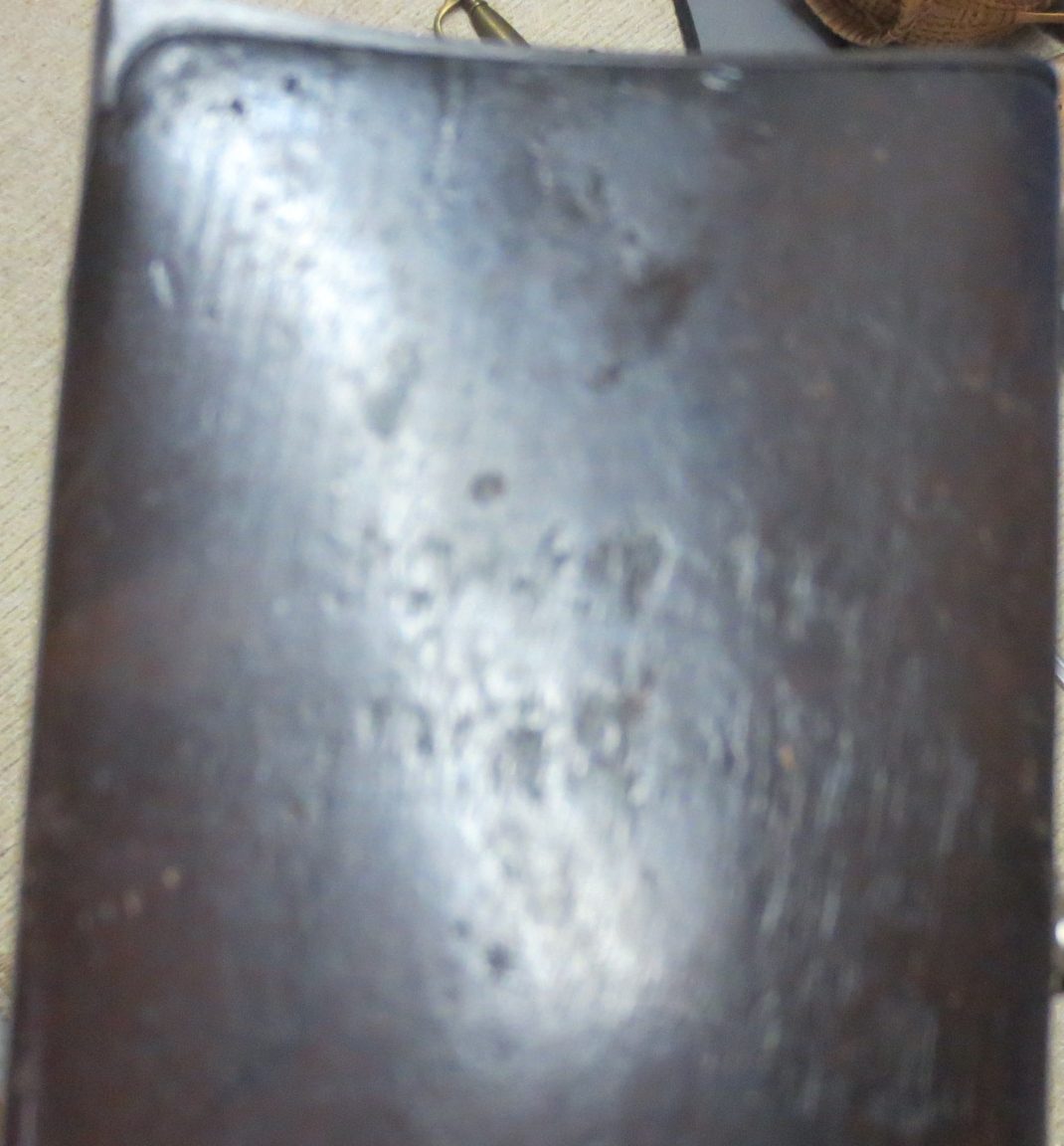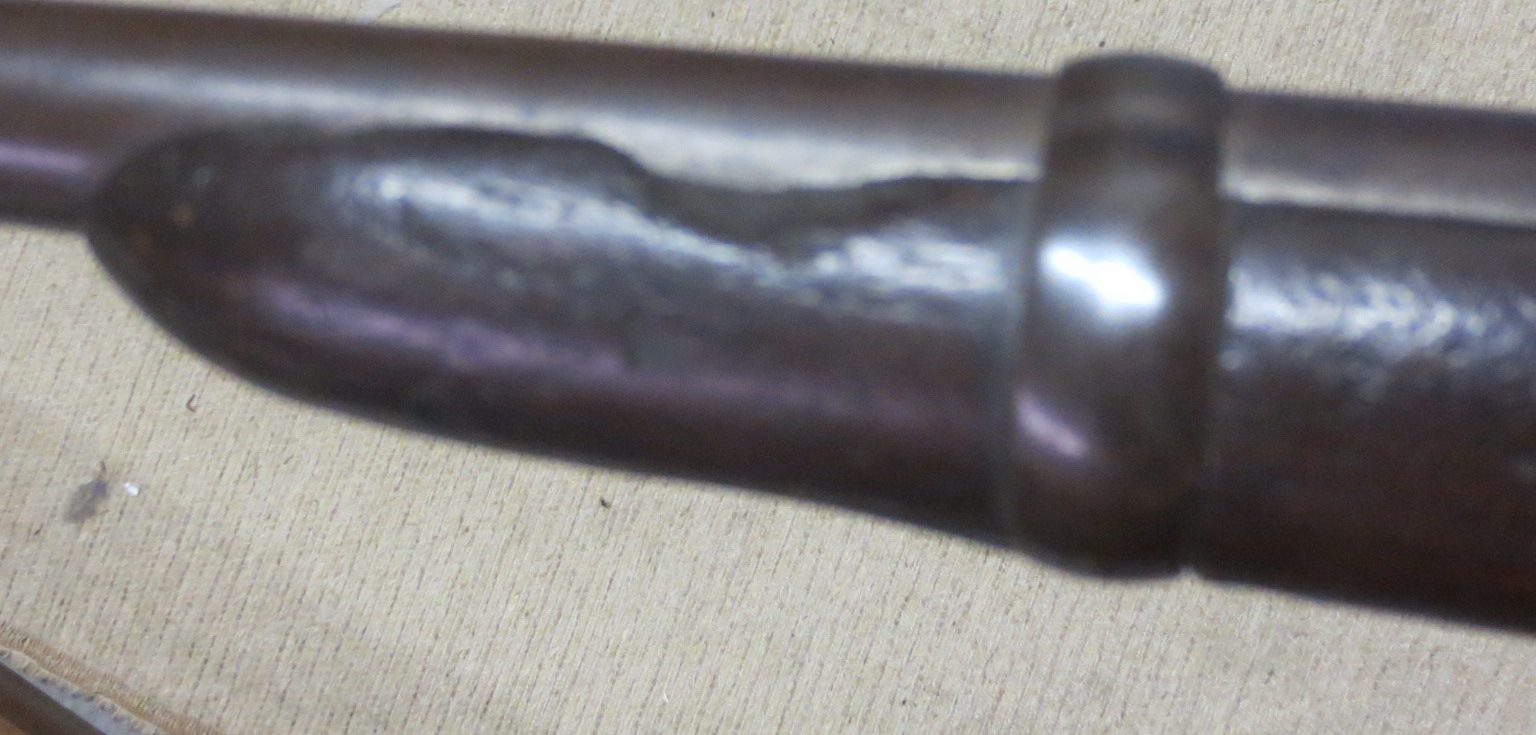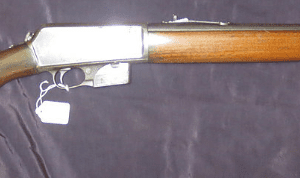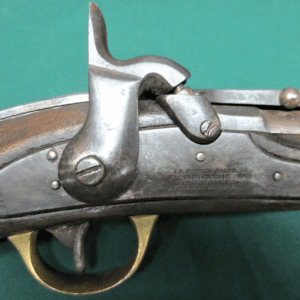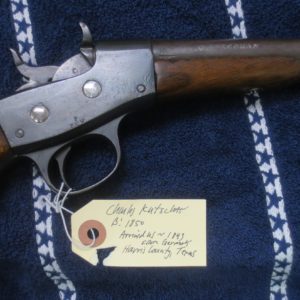Description
Very nice, solid and clean example of the famous .52 Spencer carbine serial number 35,279. It is noted by Springfield Research Service that #35275 and #35381 were issued to the 3rd Michigan Cavalry so there is a VERY strong probability that this one was, too. The unit was extremely active in Mississippi during the Civil War and pursued Confederate Gen. Joe Shelby as he headed into Texas in 1865.
All mechanical systems are tight and functional and the weapon overall has a pleasing gray-brown patina overall. The wood is solid and the magazine tube is intact, as is the rear sight. It has a period of use small indent to the upper left forearm as shown and a wonderful rub arc in the buttstock showing it was carried mounted with a sling swivel over the shoulder strap!
The Third Michigan Cavalry was raised under the superintendence of Colonel Kellogg, who also supervised the raising of the 2nd., having its rendezvous at Grand Rapids. Its recruitment commenced early in July, 1861, mustering into the service of the United States on November 1, 1861, having on its muster rolls, 1163 officers and men.
The Regiment left for the field on November 28,1861, under the command of Lieutenant Colonel Minty, with orders to report to St.Louis,MO, where on its arrival was stationed at Benton Barracks. General Pope being engaged in a movement against New Madrid and Island #10, in the Mississippi River, they were ordered to join those forces. In command of Lt.Colonel Minty, they proceeded to that vicinity, reaching New Madrid on the 13th. of March. The Regiment participated in the Siege of Island #10, from March 14th until the following April 8th, when it surrendered. Its first engagements with the Confederates was at New Madrid, March 13th., where it commenced a most credible career, giving rebels a lively idea what Michigan cavalry were composed of, and what they might expect from them in the future, which this Regiment made them fully understand and realize during the long war to follow. Captain John K. Mizner, U.S. Army, having been commissioned by the governor, Colonel of the Regiment, March 7,1862, joined, then assumed command of the Regiment on March 31st.
The Third, after the surrender of Island #10, moved with Pope’s command, joining the rest of the army in front of Corinth,MS, serving there until its evacuation by the Confederates, being engaged with them at Farmington, May 5th., then in the Siege of Corinth, from May 10th. to the 31st., where its services in scouting in that vicinity was continuous and arduous. Following the retreat of the southern forces from that point, they entered upon the Grant Campaign in Mississippi, serving under the command of General Rosecrans, encountering the southern forces with much success in numerous engagements and skirmishes, at Spangler’s Mills, July 26th., Bay Spring, September 10th., then Iuka, September 19th., where they became conspicuously distinguished while under the command of Captain Wilcox, Colonel Mizner being then Chief of Cavalry.
Having the advance of the forces under General Hamilton, moving eastward on Tuscumbia Road, they engaged the Confederates in a most vigorous manner. The Battle of Iuka was sanguine, the firing rapid and heavy, the ground being hotly contested, when, night coming on, became master of the field, closing the scene of carnage. Morning revealed the fact that during the darkness of the night, the confederates had left the field and was rapidly moving southward, while the union forces made a vigorous pursuit for many miles, becoming several times hotly engaged, causing the Southerners to repeatedly form line of battle to check the union advance.
The Regiment was actively occupied in the engagements at Corinth, October 3rd. and 4th., at Hatchie, October 6th., Hudsonville, November 14th., Holly Springs, November 19th., Lumkin’s Mills, November 30th., Oxford, December 2nd., then Coffeeville on December the 5th. Besides which had been taken while cooperating with other regiments, the Third captured 3 Lieutenant Colonels, 2 Majors, 13 Captains, 19 Lieutenants and 1249 men. Its losses had been 7 killed, 45 wounded and 59 prisoners. The weather and strain of the movements had caused the death of an additional 104 men.
In November, 1862, communications between General Grant, at La Grange, and General Sherman at Memphis, were cut off by confederates destroying telegraph lines and railroad track. Battalions and regiments of cavalry tried in vain to restore them. A brigade of infantry, with a battery of light artillery, with a regiment of cavalry, is sent out to open the way, and Captain Newall’s Company K, of the Third are what is selected to bear the dispatches. The best men and horses are selected, General Grant delivers Newell the papers for General Sherman, saying “Get them through” The company leaves near dark, when about three miles out, meets the entire command that was sent out in the morning, returning. They had been fighting a heavy force of cavalry and artillery all day, then had decided to retire to the within the union lines during the night. Newall keeps on in the darkness of night to Moscow. He directs Lieutenant McIntyre to wear a confederate uniform, he enters the town, the Southerners have fallen back across the Wolf River. The company advances to the bridge, a reconnaissance is made across the river, the rebels are encamped at points along a road that leads to Memphis, with the large force nearby, Newall opts for a circuitous route of 17 miles to bypass the force before Newall again reaches the road at daybreak, near the town of Sommerville, Newall then finds the road guarded at several points by large detachments of cavalry, but General Grant said the dispatches must get through to Memphis, so the way must be cut through with sabres or the mission abandoned. Newall opts for the former and dash forward, attacking, capturing pickets and picket-posts, driving videts in every direction. They then come upon a whole confederate regiment, overwhelm their guards, still pressing on, still taking prisoners. Reaching the Wolf River, they find the rebels have burnt the bridge, now with further progress cut off, the large rebel force within pistol shot, Newall’s command plunges into the river, they are mistaken for Confederates and not fired upon, they reach the opposite bank and push on, reaching the picket line of General Sherman’s forces before the evening gun is fired. They are soon at headquarters, the dispatchs safely in the hands of Sherman, much to the surprise of the whole army. Given hearty congratulations by the general, they are given two days of rest before the return to LaGrange. As a token of appreciation, they are given an escort on the return trip, General Grierson’s Illinois cavalry.
The Regiment, again met the Confederates at Grenada, on August 14th,1863, Byhalia, October 12th., then at Wyatt’s Ford, on the Tallahatchie River, on October 13th. In addition to these principal engagements, the Regiment participated in a large number of skirmishes of minor importance. In the affair at Grenada, the Third was in the advance, gaining possession of the town after a sharp engagement, then immediately commenced the destruction of the Southern machinery and rolling stock that was accumulated here. Over sixty locomotives, in addition to more than 400 cars were destroyed. At Byhalia and Wyatt’s Ford, the Regiment was warmly engaged. In both of these actions, the Confederates were completely routed. The Third aided largely in driving the notorious rebels, Richardson, Dawson and Cushman, from Western Tennessee, together with the numerous guerilla bands that infested the area, being destroyed or dispersed.
During November and December, 1863, the Regiment was constantly engaged in scouting, along with various expeditions through Northern Mississippi and Western Tennessee, visiting most of the important places in the region. They had frequent encounters with confederate forces, under General Forrest and Chalmers. Engagements and skirmishes in which the Regiment participated occurred at Ripley,MS, on November 29th., Orizaba,MS, November 30th., Ellistown,MS, December 3rd., Purdy,TN, December 22nd., and Jack’s Creek,Tn on December the 24th. During the period mentioned, the Regiment reported marches totalling over 1000 miles. On the 1st. of January, the Third arrived at LaGrange,Tn, where they commenced building winter quarters, where on the 19th., the required number,592, re-enlisted, then on the 27th, were mustered in as Veteran Volunteers and sent home on veteran furlough, arriving at Detroit on the 7th. of February. The Regiment rendezvoused at Kalamazoo, at the expiration of their 30 day leave, then along with many new recruits, set out for St.Louis, remaining there nearly two months, awaiting the arrival of new horses, arms and equipment. During this period they were employed as provost guards for the city.
Although still dismounted, the Regiment left the city on the 18th. of May, proceeding to Little Rock,AR, where they arrived on the 24th., reporting to Major General Steele. They were mounted on the 1st., then soon thereafter began scouting through the state. They assisted in driving Confederate General Shelby beyond the Arkansas River, in dispersing the bands of guerrillas that roamed the area, and captured over 800 head of cattle.
From November, 1864, through February, 1865, the Regiment constituted the garrison of the post of Brownsville Station, on the Memphis and Little Rock Railroad, occupied with scouting along the line of that road and making several expeditions as far south as Arkansas Post, on the Arkansas River, collecting large droves of cattle, thereby furnishing nearly all of the beef required for the supply of the army then serving in the Department of Arkansas. At Brownsville Station, the Regiment erected a complete set of winter quarters and stables, so neatly and tastefully arranged, as to present the appearance of an important town, which attracted so much attention, as to change the name of the town from Brownsville Station, to Michigan City. The very active duty of the Regiment at this time was so conducive to health, that 1008 men were daily reported present for duty, while less than 3 percent were on the sick list. Early in February the Regiment was selected to constitute a part of a division then being organized for active and important service in early spring, then was assigned to the 1st. Division, 7th. Army Corps, then moved to Brownsville. On the 14th of March, the brigade was transferred from the Department of Arkansas to the Military Division of West Mississippi, to join the troops under Major General Canby, designed to operate against Mobile, the Regiment proceeding by steamer to New Orleans, arriving at Carrolton,LA, March 23rd., embarking for Mobile early in April. After the fall of Mobile, they were employed on outpost duty until the surrender of the Confederate forces east of the Mississippi River, when the Regiment was selected as the escort of General Canby on the occasion of his receiving the formal surrender of the forces of General Taylor. They left Mobile on May 8th, marching cross country to Baton Rouge, reaching there the 22nd. When General Sheridan assumed the command of the Military Division of the Southwest, the Regiment was selected, then ordered to report to him for duty, then immediately prepared to join the Expedition to Texas, leaving Baton Rouge for Shreveport, June 10th, commencing the march into Texas, arriving at San Antonio the 2nd of August. Remaining there, patrolling the general area, until February 15, 1866, at which time they were dismounted, mustered out of service, and sent home to Michigan, arriving at Jackson on March 10th., then paid off and disbanded on the 15th.
During their term of Federal service, they were engaged at:
New Madrid, Mo;Island #10, Mo;Farmington, Ms;Corinth, Ms;Spangler’s Mills, Ms;Bay Springs, Ms;Iuka, Ms;Hatchie, Ms;Holly Springs, Ms;Hudsonville, Ms;Lumkin’s Mills, Ms;Oxford, Ms;Coffeeville, Ms;Brownsville, Ms;Clifton, Ms;Panola, Ms;Grenada, Ms ;Byhalia, Ms;Wyatt’s Ford, Ms;Ripley, Ms;Orizaba, Ms;Ellistown, Ms;Purdy, Ms;Jack’s Creek, Ms;
1862-1865
Total Enrollment: 2,560
Killed in Action: 25
Died of Wounds: 10
Died of Disease: 379
Total Casualty Rate: 16.1%




